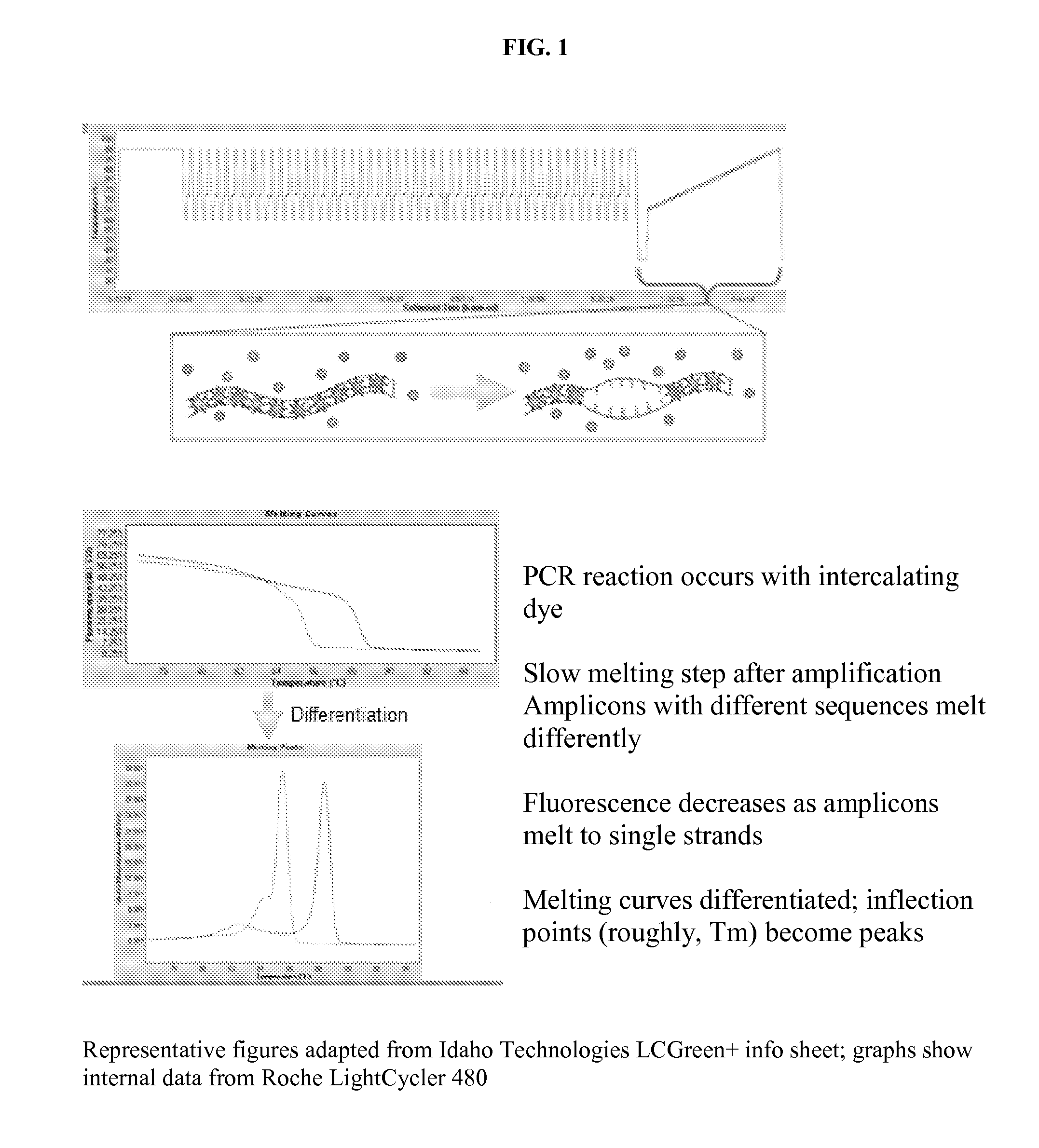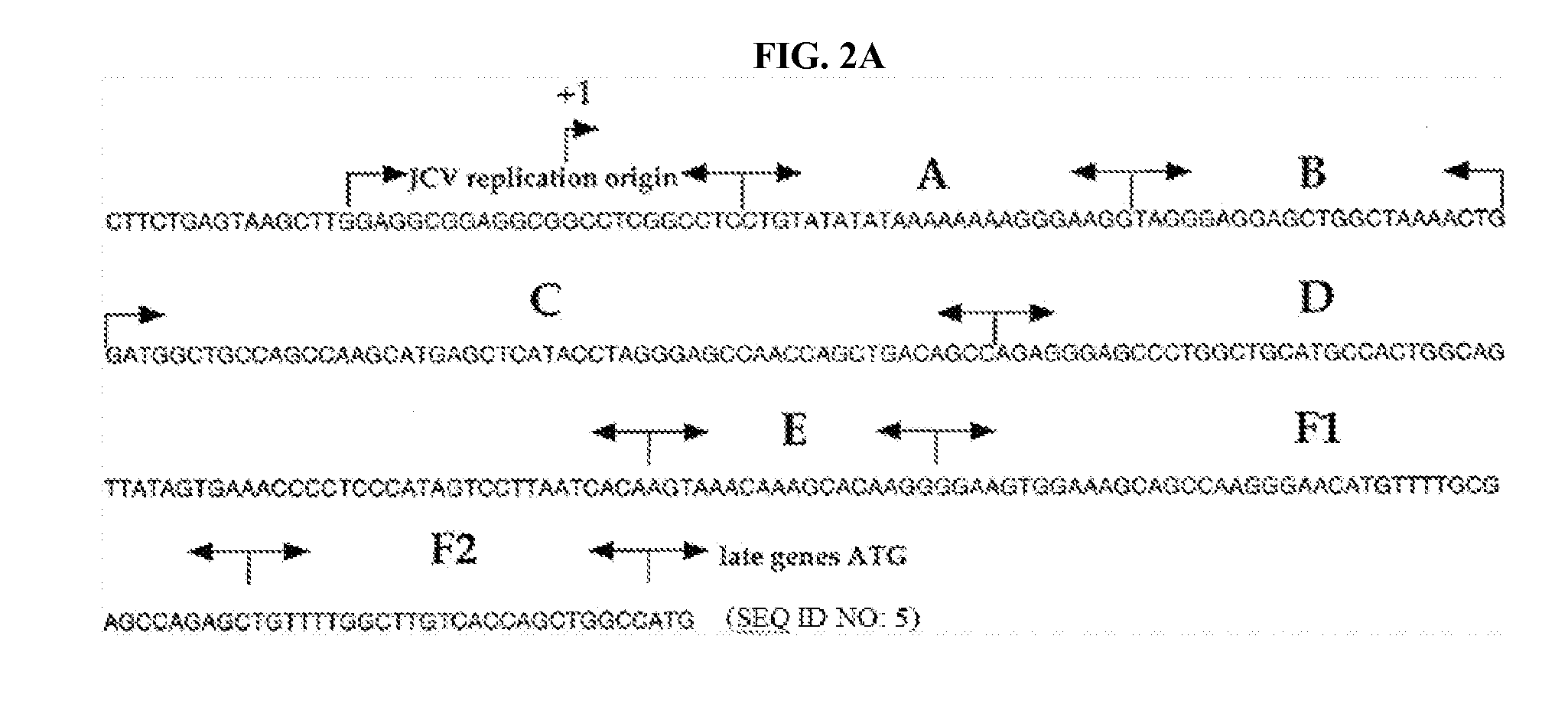High resolution melting analysis assay for the detection of viral DNA
a melting analysis and high-resolution technology, applied in the field of nucleic acids detection in biological samples, can solve the problems of difficult detection of jcv and jcv mutants in biological samples
- Summary
- Abstract
- Description
- Claims
- Application Information
AI Technical Summary
Benefits of technology
Problems solved by technology
Method used
Image
Examples
example 1
Differentiation of Mad-1 and Archetype NCCRs
[0136]Twelve plasmids, each representing one of 12 patient-derived NCCR (Noncoding Control Region) sequences cloned into pCR4-TOPO vectors and transformed into TOP10 cells using the TOPO TA Cloning Kit for sequencing (Cat. 45-0030, Invitrogen), were obtained in plasmid form and retransformed into TOP10 cells using a standard heat-shock method (See Reid et al, J Infect Dis. 2011 Jul. 15; 204(2):237-44 for more information regarding the original cloning).
[0137]The plasmids were purified from the retransformed cultures using the Qiagen Spin Miniprep Kit (Cat. 27104, Qiagen) according to protocol, which usually yielded about 150 ng / μL. The plasmids are denoted in these experiments by the names 144-01, 146-01 (Mad-1), 149-13 (archetype), 161-03, 168-16, 173-01, 224-01, 225-01, 229-01, 229-01, 229-24, 234-24, and 242-01. All of these plasmids have rearranged NCCR genotypes except for 149-13 (archetype).
[0138]Stocks meant for PCR reactions were g...
example 2
Differentiation of a Range of NCCR Genotypes
[0139]Similarly as discussed in Example 1 above, all 12 plasmid stocks were run using the HRM method provided herein. The results are depicted in FIG. 4. One replicate of each genotype is shown. Amounts of plasmids in each reaction were estimated to be on the order of 107 copies / reaction. Two of the plasmids (229-01 and 229-24) are from different clones of virus from the same patient, and have the same NCCR sequence—these curves overlap, while the others are more unique.
example 3
Genotyping Mixtures of Different NCCR Genotypes
[0140]Mixtures of 146-01 (Mad-1) and 149-13 (archetype) were generated according to Table 1 and HRM experiments were performed.
TABLE 1Mixtures of Mad-1 and archetypeAmt. of 146-01Amt. of 149-13Vol. of 146-01(Mad-1)Vol. of 149-13(arche)Mix nameCurve|certifier(Mad-1) (μL)(copies / reaction)(arche) (μL)(copies / reaction)Pure Mad-1A10866000001B86928002111202C76062003166803D65196004222404E54330005279005F43464206333806G32598007389207H22732008444808I186600950040Pure archetypeJ001055600
[0141]The results are depicted in FIG. 5. The percentages denoted in FIG. 5 are volumetric percentages; the actual copy numbers are given in Table 1.
PUM
| Property | Measurement | Unit |
|---|---|---|
| mass | aaaaa | aaaaa |
| concentration | aaaaa | aaaaa |
| mass | aaaaa | aaaaa |
Abstract
Description
Claims
Application Information
 Login to View More
Login to View More - R&D
- Intellectual Property
- Life Sciences
- Materials
- Tech Scout
- Unparalleled Data Quality
- Higher Quality Content
- 60% Fewer Hallucinations
Browse by: Latest US Patents, China's latest patents, Technical Efficacy Thesaurus, Application Domain, Technology Topic, Popular Technical Reports.
© 2025 PatSnap. All rights reserved.Legal|Privacy policy|Modern Slavery Act Transparency Statement|Sitemap|About US| Contact US: help@patsnap.com



